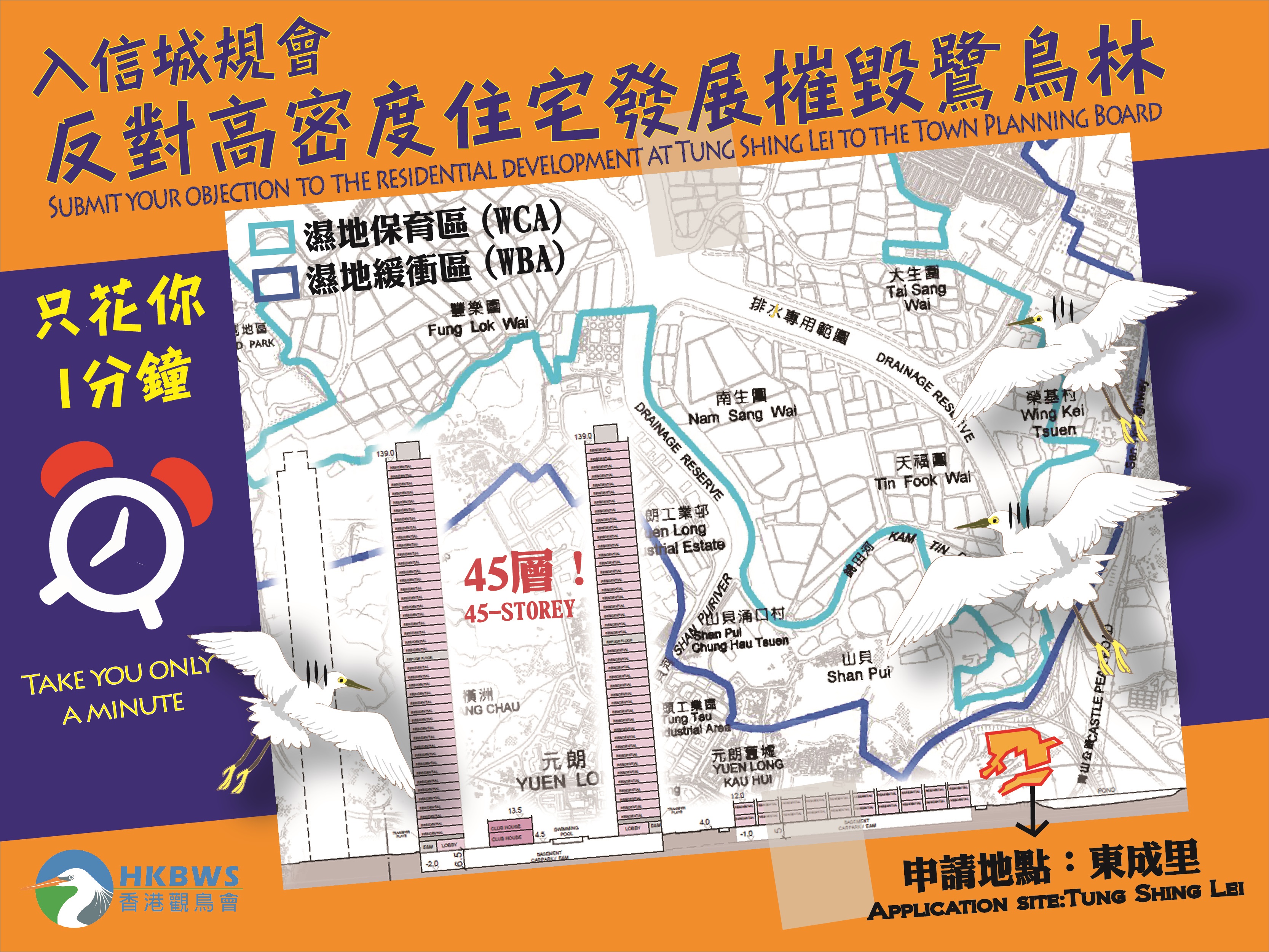Herons and egrets nest together in colonies called egretries and there are some 20 nesting colonies in Hong Kong. Due to the restricted distribution of their nesting sites, breeding egrets/herons together with their nesting colonies, feeding grounds and flight paths should all be protected. Tung Shing Lane Egretry is located south of Nam Sang Wai and is mainly the nesting site of Little Egrets and Chinese Pond Heron with almost 20 years of history. According to the 2018 survey, a total of 84 nests were recorded, making the Tung Shing Lane Egretry the second and third largest egretry in Deep Bay and in Hong Kong respectively[1]. Although situated outside the “Wetland Conservation Area” (WCA) and “Wetland Buffer Area” (WBA), the breeding egrets/herons rely on the river channels and wetlands within the WCA and WBA as feeding grounds to raise their chicks. Therefore, the Tung Shing Lane Egretry has strong ecological connection with the Deep Bay wetland ecosystem.
However, developers recently submitted a planning application for high-rise residential development at Tung Shing Lane Egretry and its surroundings, including 34 two to three-storey houses and 16 blocks of 25 to 45-storey residential towers reaching 135 metres tall in building height. HKBWS is concerned the large scale development with an estimated population of 11,500 would directly destroy a portion of the nesting colony and greatly increase the human disturbance, which may even lead to the abandonment of this breeding ground. We encourage all of you to submit your objection to the development on or before 26 February 2021, and urge the Town Planning Board and Government department to be a conscientious gatekeeper, not to set an undesirable precedent for high-rise development in the Deep Bay area.
| HKBWS's Full Submmission |
【Our Twelve Reasons for Objection】
1. Not in line with the general planning intention of the statutory plan
2. Provision of public housing is misleading and cannot justify the proposed private housing development
3. Misinterpretation of the government housing policy to develop the whole Uzone for housing
4. Devalue the application site by generalizing it as unused land
5. Wetland loss due to pond filling
6. Inadequate ecological surveys
7. Ecological importance of Tung Shing Lane Egretry
8. Failed to identify the exact locations of Tung Shing Lane Egretry
9. Underestimate direct/indirect impacts on the Tung Shing Lane Egretry
10. Obstruct flight path of breeding ardeids from/to Tung Shing Lane Egretry
11. Adverse impacts of the proposed high-rise residential development
12. Cumulative ecological impacts and undesirab
[1] Anon, 2018. Summer 2018 Report: Egretry Counts in Hong Kong with particular reference to the Mai Po Inner Deep Bay Ramsar Site. Report by The Hong Kong Bird Watching Society to the Agriculture, Fisheries and Conservation Department, Hong Kong Special Administrative Region Government.
→Support HKBWS's bird conservation and research work NOW!




